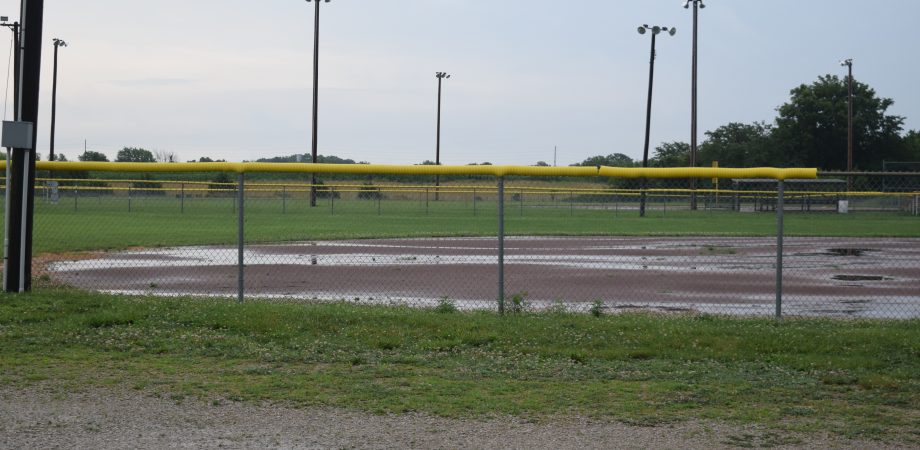Infield Maintenance After Rain: What NOT to Do

When it comes to managing rainwater on your infield, the approach you take can have long-term effects. If you use improper maintenance techniques after a rain event, you may be setting yourself up for failure down the road. So here’s what not to do on your infield after it rains.
Don’t rush onto a wet infield. Doing so may cause more harm than good. The main risk is ruining the grade of the infield, which is often an investment in and of itself. Equipment can leave ruts and bumps on a wet infield, and trying to disperse standing water will only make a low spot worse. Often, just a few hours will make a huge difference if you have the sun, wind, and lower humidity to work with. In the case of post-rain maintenance, sooner is not better.
Don’t drag or push water off the infield into the grass. Not only will this create a playability issue, but it will also damage the back arc. You’ll be moving infield mix and conditioner into the edge, and doing so can make drainage worse off the back arc.
Don’t use too much drying agent or leave it on the infield after use. When using a drying agent, such as Advanced Dry, you should remove as much of the drying agent off the field as possible. Otherwise, the finer materials will incorporate into the infield mix and create a safety hazard due to the lack of structure for footing. Alternatively, you could use a larger gradation of calcined clay that will also absorb the water and can be left on the field with existing conditioner.
Don’t add just any material to dry out the infield. As mentioned above, products other than drying agents can work. An infield conditioner can be a good option. However, some materials, like warning track mix, can’t just be thrown onto a wet field. Your ATS sales representative can advise you on what products would be appropriate for the conditions of your infield after a rain event.
Don’t assume the problem is out of your control. Poorly graded fields and inferior infield mixes are the most common problems when dealing with rain games. To avoid future issues, identify why the infield is holding water. Is the infield mix too low? Is the back-arc acting as a dam, not allowing water to release? Is the field poorly graded? Are there just a couple pockets holding water that could easily be remedied by adding a small amount of material? Consider these questions so you can be proactive about infield drainage.
As always, contact your ATS sports field sales representative to help diagnose your issue and find the best solution for your problem.







